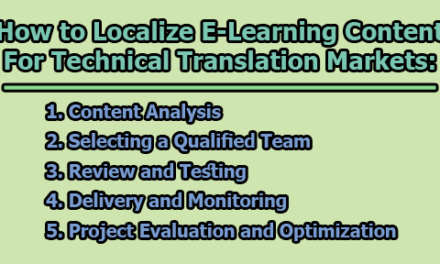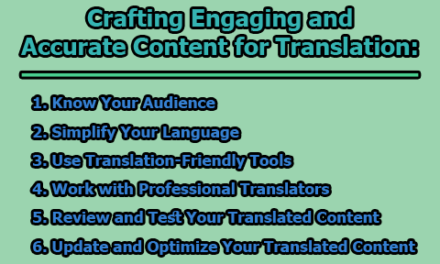Enhancing Technical Translations with Technology:
Technical translation is a demanding and rewarding field that necessitates precision, specialized knowledge, and clarity. However, it can also be time-consuming and prone to errors, making it crucial to employ technology to improve productivity, quality, and collaboration. In this article, we’ll explore enhancing technical translations with technology, including the use of Computer-Assisted Translation (CAT) tools, Machine Translation (MT) systems, terminology extractors, style guides, collaboration platforms, and proofreading tools.
1. Computer-Assisted Translation (CAT) Tools: CAT tools are software applications that streamline the translation process by using a database of previous translations, known as a translation memory (TM). These tools offer terminology management, quality checks, and glossaries. They are invaluable for translating a variety of technical documents, such as manuals, reports, specifications, and patents. CAT tools save time, reduce costs, and ensure consistency in technical translations.
Translation memories allow translators to reuse previously translated content, maintaining consistency throughout a project. Additionally, CAT tools provide real-time quality checks, flagging potential issues like inconsistencies or terminology discrepancies. This feature helps maintain the high quality demanded in technical translations.
2. Machine Translation (MT) Systems: MT systems employ artificial intelligence to automatically translate text from one language to another. These systems are especially useful for handling large volumes of text or low-priority content. However, MT systems are not error-free and often require human revision to correct inaccuracies, refine style, and adapt to the context. It’s crucial to review and edit MT-generated translations carefully before delivering them to clients.
MT systems can be particularly beneficial when time constraints are tight, as they can provide a rough draft that can be refined by human translators, thus increasing productivity.
3. Terminology Extractors: Terminology extractors are tools designed to identify and extract key terms and phrases from source texts or text corpora. This process assists in the creation and maintenance of glossaries, which are essential for technical translations. A glossary is a list of terms along with their definitions or translations in a specific domain or project. It ensures accuracy, consistency, and clarity in technical translations. Terminology extractors can be used to analyze source texts or TMs and generate glossaries that can be integrated into CAT tools or MT systems.
4. Style Guides: Style guides are documents that define rules and conventions for writing and formatting text in a specific language, domain, or project. Employing a style guide can significantly enhance the quality and readability of technical translations by offering guidelines on grammar, punctuation, spelling, capitalization, abbreviations, numbers, units, symbols, and tone. You can either utilize existing style guides or create your own for future projects. Consistency in style and terminology is crucial in technical translation, and a style guide helps maintain this consistency.
5. Collaboration Platforms: Collaboration platforms are tools that facilitate communication and cooperation among translators, editors, reviewers, and clients during technical translation projects. They enable real-time or asynchronous sharing of feedback, suggestions, queries, and updates. Collaboration platforms can be used to work on the same document or TM with other translators, seek clarification or confirmation from clients or subject matter experts, or receive and implement revisions from editors or reviewers. This collaborative approach ensures that the final translation is of the highest quality and accuracy.
6. Proofreading Tools: Proofreading tools are software applications that check text for spelling, grammar, punctuation, and style errors. These tools are invaluable for improving technical translations by detecting and correcting mistakes that may have been overlooked or introduced during the translation process. Using a proofreading tool helps ensure the final translation is polished and free of errors before delivering it to clients. Furthermore, it allows translators to learn from their errors and avoid them in future projects.
In conclusion, improving technical translations with technology is essential for meeting the high standards of accuracy, clarity, and consistency required in this field. Utilizing CAT tools, MT systems, terminology extractors, style guides, collaboration platforms, and proofreading tools can significantly enhance productivity, quality, and collaboration in technical translation projects. These tools empower translators to deliver accurate, error-free, and polished translations, ultimately benefiting both the translators and their clients in this challenging but rewarding field.

Former Student at Rajshahi University










